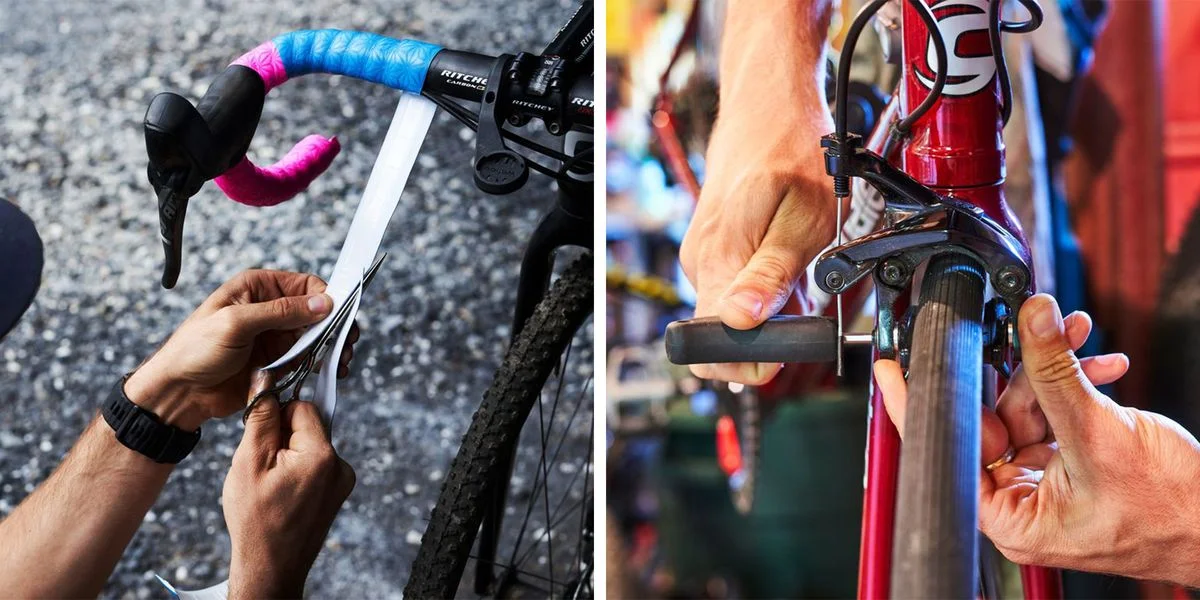Cycling isn't just a sport; it's a lifestyle. Whether you're a seasoned cyclist or just starting, understanding bike maintenance is crucial for a smooth and safe ride. Proper maintenance not only prolongs the life of your bike but also enhances your riding experience. In this comprehensive guide, we'll delve into essential bike maintenance tips that every cyclist should know. From basic checks to advanced techniques, we've got you covered.
You May Also Like: Para-Swimming: Overcoming Challenges in the Pool
1. Keep Your Bike Clean and Lubricated:
One of the simplest yet most effective ways to maintain your bike is by keeping it clean and well-lubricated. After each ride, take a few minutes to wipe down your bike with a damp cloth to remove dirt, grime, and sweat. Pay special attention to the chain, gears, and brakes. Once clean, apply a suitable lubricant to the chain and other moving parts to prevent rust and ensure smooth operation.
2. Check Tire Pressure Regularly:
Proper tire pressure is essential for optimal performance and safety. Use a pressure gauge to check the pressure of your tires before every ride, as well as periodically during longer rides. Under-inflated tires can lead to increased rolling resistance and a higher risk of punctures, while over-inflated tires can affect handling and traction. Refer to your bike's manual or the sidewall of the tire for the recommended pressure range.
3. Inspect Brakes and Brake Pads:
Your brakes are your first line of defense against accidents, so it's crucial to keep them in top condition. Regularly inspect the brake pads for wear and tear, and replace them if they appear worn down or if braking performance is compromised. Additionally, check the brake cables and levers for any signs of damage or fraying, and ensure that the brakes engage smoothly and evenly.
4. Tighten Bolts and Fasteners:
Before each ride, take a moment to check and tighten any loose bolts and fasteners on your bike. Pay particular attention to the stem, handlebars, saddle, and pedals, as these are areas prone to vibration and movement during riding. Using a torque wrench, tighten the bolts to the manufacturer's recommended specifications to prevent over-tightening or stripping.
5. Learn Basic Repairs:
While some bike maintenance tasks may require professional assistance, learning basic repairs can save you time and money in the long run. Familiarize yourself with tasks such as fixing a flat tire, adjusting gears and brakes, and replacing a broken chain. There are plenty of online tutorials and books available to guide you through these repairs, and practice makes perfect.
6. Protect Your Bike from the Elements:
Exposure to the elements can take a toll on your bike's components, so it's essential to take steps to protect it. When not in use, store your bike indoors or under a cover to shield it from rain, sun, and extreme temperatures. Consider applying a protective coating or wax to metal parts to prevent corrosion, and regularly inspect and replace any worn or damaged components.
7. Schedule Regular Maintenance:
In addition to regular checks and minor repairs, scheduling periodic maintenance with a professional bike mechanic is crucial for keeping your bike in top condition. A qualified mechanic can perform more in-depth inspections and adjustments, such as truing wheels, adjusting bearing systems, and replacing worn drivetrain components. Aim to schedule a comprehensive tune-up at least once a year, or more frequently if you ride frequently or in challenging conditions.
8. Monitor Chain Wear:
Your bike's chain is subject to significant wear and tear, especially if you ride frequently or in adverse conditions. Regularly inspect the chain for signs of wear, such as elongation or rust. A chain wear indicator tool can help you determine if it's time to replace the chain. Riding with a worn chain can accelerate wear on other drivetrain components, such as the cassette and chainrings, so it's essential to address chain wear promptly to avoid costly repairs.
9. Keep an Eye on Wheel Alignment:
Proper wheel alignment is crucial for stable handling and efficient power transfer. Periodically check the alignment of your wheels by spinning them and observing for any wobbles or irregularities. If you notice unevenness, it may indicate loose or broken spokes, an out-of-true wheel, or misaligned dropouts. While minor truing can be done at home with a spoke wrench, more significant issues may require professional attention.
10. Protect Your Bike During Transportation:
Whether you're traveling to a race or hitting the trails with friends, transporting your bike safely is essential to avoid damage. Invest in a quality bike rack or carrier designed to securely hold your bike in place during transit. Use additional padding or protective covers to shield delicate components from scratches and impacts. When loading and unloading your bike, handle it carefully to avoid bending or damaging parts such as the derailleur hanger or brake calipers.
11. Invest in Quality Tools:
Having the right tools for the job can make bike maintenance tasks much more manageable and enjoyable. Invest in a basic toolkit that includes essentials such as hex keys, screwdrivers, tire levers, and a chain tool. Quality tools may cost more upfront but will last longer and provide better results than cheap alternatives. Additionally, consider investing in a repair stand to elevate your bike off the ground and make maintenance tasks more accessible.
12. Stay Informed and Educated:
The world of bike maintenance is constantly evolving, with new techniques, technologies, and products emerging regularly. Stay informed and educated by reading books, watching videos, and attending workshops or clinics on bike maintenance. Joining online forums and communities can also provide valuable insights and support from fellow cyclists and mechanics. By staying up-to-date with the latest developments, you can ensure that your bike receives the best care possible.
Conclusion:
Bike maintenance is a vital aspect of being a responsible and skilled cyclist. By following these additional tips and incorporating them into your maintenance routine, you can ensure that your bike remains in top condition for years to come. Remember, regular maintenance not only prolongs the life of your bike but also enhances your riding experience by ensuring optimal performance and reliability. So, make bike maintenance a priority and enjoy the many benefits of a well-maintained bike on your next ride!







.png)


0 Comments